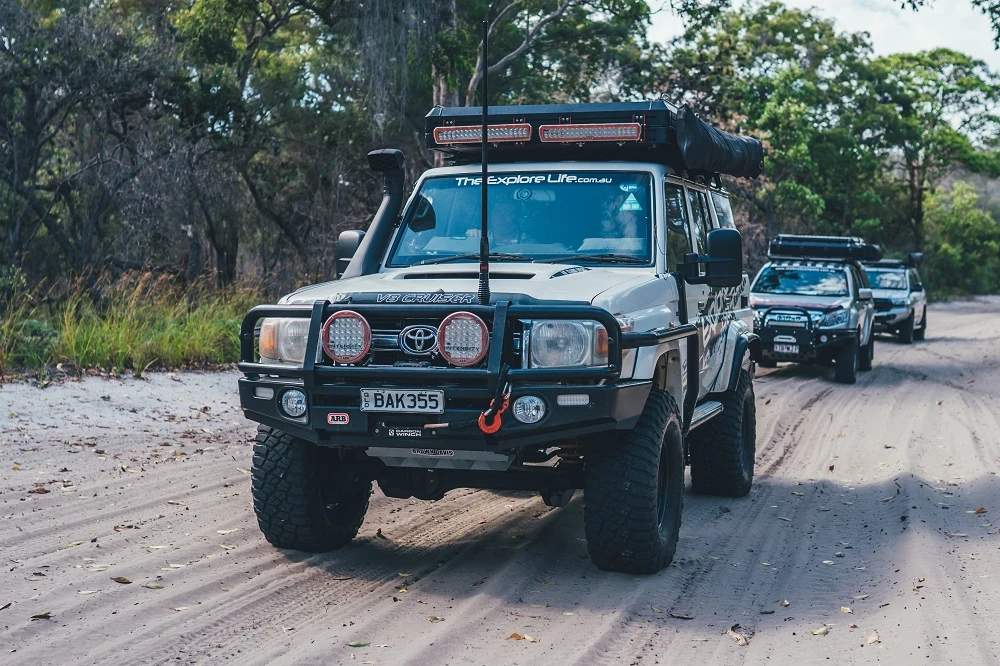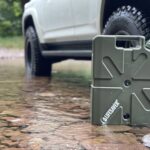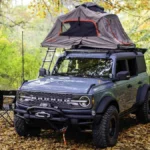Overlanding in Australia offers adventurers an unparalleled opportunity to explore some of the most remote and breathtaking landscapes on Earth. From the vast red deserts of the Outback to lush rainforests and rugged coastlines, Australia provides a diverse canvas for 4×4 travel, camping, and self-reliant exploration. However, traversing these remote regions requires careful planning, the right gear, and a thorough understanding of safety considerations.
This guide is designed to provide everything you need to know about overlanding in Australia, including the best routes, essential gear, safety tips, and planning advice for an unforgettable journey.
Introduction
Australia’s sheer size and variety of landscapes make it a prime destination for overlanders. Whether traveling solo, with family, or in a small group, the challenges of remote travel demand preparation, resilience, and a strong awareness of potential risks.
Overlanding is not just about driving from point A to point B; it’s about experiencing the journey itself. Remote tracks, unpredictable weather, and self-sufficient camping experiences offer both freedom and responsibility. This article will equip you with the knowledge to plan and execute an overland adventure across Australia safely and efficiently.
Why Overland in Australia?
Australia offers a unique overlanding experience for several reasons:
Unique Landscapes
From the red sands of the Simpson Desert to the tropical rainforests of Queensland, the diversity of terrain ensures every trip is visually spectacular. Travelers can enjoy:
- Desert plains and sand dunes
- Mountain ranges and rocky outcrops
- Coastal tracks and river crossings
- Dense forests and lush valleys
Cultural Experiences
Australia’s Outback is rich in history and culture. Overlanders have the opportunity to:
- Visit Indigenous cultural sites and learn about traditional land practices
- Explore rural towns and local communities
- Discover historic tracks and landmarks
Adventure Opportunities
Overlanding in Australia allows for a variety of activities beyond driving, including:
- Remote camping under the stars
- Off-road 4×4 trails
- Bushwalking and hiking
- Wildlife observation in natural habitats
Best Overland Routes in Australia
Planning your route is essential for a safe and enjoyable journey. Australia offers a mix of famous and lesser-known tracks suitable for overlanders.
The Outback Highways
Stuart Highway
- Connects Darwin to Adelaide
- Iconic route through the heart of the Outback
- Key highlights: Alice Springs, Coober Pedy, remote desert landscapes
Birdsville Track
- Historic stock route across South Australia and Queensland
- Known for sand dunes, river crossings, and wildlife spotting
- Best traveled during dry seasons to avoid mud and flooding
Oodnadatta Track
- Famous for its historic significance and scenic salt lakes
- Ideal for those seeking less-traveled routes
- Important: Ensure vehicles are well-prepared and carry emergency supplies
Coastal and Forest Routes
East Coast Overland
- Combines coastal highways with off-road detours
- Highlights: Fraser Island, Great Barrier Reef, and national parks
- Seasonal considerations: Avoid wet season for track accessibility
Rainforest Trails
- Suitable for 4×4 enthusiasts and adventure seekers
- Include areas in Queensland and northern New South Wales
- Important to check local permits and park access regulations
Off-the-Beaten-Path Trails
- Lesser-known routes for experienced overlanders
- Examples: Cape York Peninsula, Kimberly region, and Flinders Ranges
- Requires advanced planning, high-clearance vehicles, and emergency communication tools
Essential Overlanding Gear for Australia
Overlanding in Australia demands reliable and durable gear. Your preparation should cover vehicle equipment, camping essentials, personal items, and safety tools.
Vehicle Equipment
Recovery Gear
- Winch, recovery straps, and traction boards
- Essential for remote tracks with sand, mud, or uneven terrain
Spare Tires & Toolkits
- Carry at least one spare tire per vehicle
- Include tools for basic repairs and maintenance
Fuel and Water Storage
- Extra fuel cans for long stretches without refueling
- Overlanding water storage systems for drinking and cooking needs
Camping & Shelter Gear
Tents and Sleeping Systems
- Rooftop tents, swags, or ground tents
- Weather-resistant sleeping bags and mats
Cooking and Food Gear
- Portable stoves and cookware
- Food storage for long-term trips
Water Filtration
- Essential for safe drinking water
- Options: portable filters, UV purifiers, chemical treatments
Personal Gear & Safety Equipment
Navigation
- GPS devices, offline maps, and satellite phones
Clothing
- Layers for temperature fluctuations, insect protection, and sun coverage
First Aid & Safety
- Comprehensive first aid kit
- Sun protection, insect repellents, and emergency signaling tools
Recommended Gear Table
| Gear Category | Recommended Items | Notes |
|---|---|---|
| Vehicle Recovery | Winch, traction boards, recovery straps | Essential for remote tracks |
| Camping | Rooftop tent, sleeping bag, portable stove | Comfort and safety |
| Navigation | GPS device, offline maps, satellite phone | Critical for remote areas |
| Safety & First Aid | First aid kit, sunscreen, insect repellent | Health and emergency preparedness |
Tips for Safe and Enjoyable Overlanding in Australia
Pre-Trip Planning
- Plan routes with accurate maps and GPS
- Check park permits, road closures, and weather forecasts
- Share your itinerary with trusted contacts
On-Road Safety Tips
- Drive cautiously on unsealed roads
- Take regular breaks to avoid fatigue
- Carry emergency equipment and first aid
Camping & Wildlife Safety
- Choose elevated, dry campsites
- Store food securely to avoid attracting wildlife
- Practice fire safety and leave-no-trace principles
Overlanding Etiquette & Environmental Considerations
- Respect Indigenous lands and cultural sites
- Follow park rules and camping regulations
- Minimize environmental impact by avoiding off-track driving and reducing waste
FAQ Section (People Also Ask)
What are the best overlanding routes in Australia?
- Popular routes include Stuart Highway, Birdsville Track, Oodnadatta Track, Cape York Peninsula, and East Coast tracks.
What gear do I need for overlanding in the Outback?
- Essential gear includes recovery equipment, rooftop tents, portable stoves, GPS devices, first aid kits, and water storage systems.
Can I overland solo in Australia safely?
- Yes, with thorough planning, reliable gear, emergency communication, and by sticking to known tracks.
How do I stay hydrated and safe in remote areas?
- Carry sufficient water storage, use portable filtration systems, and monitor hydration levels regularly.
Are permits required for Australian national parks and tracks?
- Yes, some parks and tracks require permits. Always check local regulations before entering remote areas.
Conclusion & Call to Action
Overlanding in Australia combines adventure, self-reliance, and the thrill of exploring some of the world’s most remote landscapes. Success depends on proper planning, reliable gear, and awareness of safety and environmental considerations.
Prepare thoroughly, pack essential equipment, and follow recommended routes to ensure a safe, enjoyable, and unforgettable overlanding experience.
Ready to take your Australian overlanding adventure to the next level? Consult our guides, equip your vehicle with essential recovery and camping gear, and explore the Outback responsibly. Check out our Overlanding Recovery Gear guide for must-have tools to keep your journey secure and worry-free.








